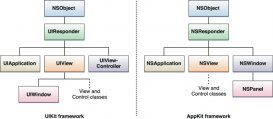前言
作为一个优秀的程序员,或者想成为优秀的程序员,最基本的你得有MVC编程思想,那么你就要对JSON获取的数据建Model,将service和controller层都分离,从而做到低耦合。现在有很多利用runtime能快速的将json数据转为一个Model。但是我在做项目的时候,发现创建Model(特别是属性特多的)写属性代码很浪费时间,降低了编程效率。后来我自己就写了个好玩的能省去时间创建Model的一个方法,下面话不多说了,来一起看看详细的介绍吧
Immutable Model
我们以UserModle为例,我们可以像这样创建:
|
1
2
3
4
5
6
7
8
9
10
11
12
13
14
15
|
public class UserModel: NSObject { public var userId: NSNumber public var name: String? public var email: String? public var age: Int? public var address: String? init(userId: NSNumber) { self.userId = userId super.init() }} |
用的时候可以像这样:
|
1
2
3
4
5
|
let userModel = UserModel(userId: 1)user.email = "335050309@qq.com"user.name = "roy"user.age = 27user.address = "上海市杨浦区" |
这样创建一个User对象好处是弹性很大,我可以随意选择设定某个property的值,但是背后同样带有很大的缺点,就是这个Model变得异常开放,不安分,这种Model我们一般叫Mutable Model。有的时候我们需要Mutable Model,但大部分的时候出于数据安全和解耦考虑我们不希望创建的property在外部可以随意改变,在初始化后不可变的Model叫做Immutable Model,在开发中我的建议尽量使用Immutable Model。我们通过把property设置成readonly,在Swift可以用let或者private(set)。也就是这样:
|
1
2
3
4
5
6
7
8
9
|
public class UserModel: NSObject { public let userId: NSNumber public private(set) var name: String? public private(set) var email: String? public private(set) var age: Int? public private(set) var address: String? } |
那么怎么写初始化方法呢?
Initializer mapping arguments to properties
当我们把property设置成readonly后,我们只能在init的时候赋值,这个时候就变成这样:
|
1
2
3
4
5
6
7
8
9
10
11
12
13
14
15
16
17
18
19
20
|
public class User: NSObject { public var userId: NSNumber public var name: String? public var email: String? public var age: Int? public var address: String? init(userId: NSNumber, name: String?, email: String, age: Int, address: String) { self.userId = userId super.init() self.name = name self.email = email self.age = age self.address = address }} |
使用的时候就变成这样:
|
1
|
let user = User.init(userId: 1, name: "335050309@qq.com", email: "roy", age: 27, address: "上海市杨浦区") |
这样创建Model安全可靠,大多数时候是有效的,但是也有一些缺点:
- 如果property很多,init方法就有很多形参,然后变得又臭又长。
- 有的时候我们只需要Model的某些property,这样我们可能为各个不同的需求写不同的init方法,最终让UserModel变得很庞大。
Initializer taking dictionary
初始化的时候注入一个字典,就是下面的样子:
|
1
2
3
4
5
6
7
8
9
10
11
12
13
14
15
16
17
18
19
20
|
public class UserModel: NSObject { public let userId: NSNumber public private(set) var name: String? public private(set) var email: String? public private(set) var age: Int? public private(set) var address: String? init(dic: NSDictionary) { self.userId = (dic["userId"] as? NSNumber)! super.init() self.name = dic["name"] as? String self.email = dic["email"] as? String self.age = dic["age"] as? Int self.address = dic["address"] as? String }} |
很显然这解决上一种第一个缺点,但是还是有一个不足之处:
- 如果字典没有某个属性对应的key的时候会崩溃,编译器并不能帮助我们排查这种运行时的崩溃。
- 不能很好的满足某些时候只需要Model的某些property的需求。
Mutable subclass
我们看看Improving Immutable Object Initialization in Objective-C关于这个是怎么描述的
We end up unsatisfied and continue our quest for the best way to initialize immutable objects. Cocoa is a vast land, so we can – and should – steal some of the ideas used by Apple in its frameworks. We can create a mutable subclass of Reminder class which redefines all properties as readwrite:
|
1
2
3
4
5
6
7
|
@interface MutableReminder : Reminder <NSCopying, NSMutableCopying>@property (nonatomic, copy, readwrite) NSString *title;@property (nonatomic, strong, readwrite) NSDate *date;@property (nonatomic, assign, readwrite) BOOL showsAlert;@end |
Apple uses this approach for example in NSParagraphStyle and NSMutableParagraphStyle. We move between mutable and immutable counterparts with -copy and -mutableCopy. The most common case matches our example: a base class is immutable and its subclass is mutable.
The main disadvantage of this way is that we end up with twice as many classes. What's more, mutable subclasses often exist only as a way to initialize and modify their immutable versions. Many bugs can be caused by using a mutable subclass by accident. For example, a mental burden shows in setting up properties. We have to always check if a mutable subclass exists, and if so use copy modifier instead of strong for the base class.
大致意思是创建一个可变子类,它将所有属性重新定义为readwrite。这种方式的主要缺点是我们最终得到两倍的类。而且,可变子类通常仅作为初始化和修改其不可变版本的方式存在。偶然使用可变子类可能会导致许多错误。例如,在设置属性时会出现心理负担。我们必须始终检查是否存在可变子类。
还有一点这种方式只能在Objective-C中使用。
Builder pattern
Builder pattern 模式需要我们使用一个Builder来创建目标对象,目标对象的property依旧是readonly,但是Builder的对应property却可以选择为readwrite。依旧用UserModel为例,我们需要为其进行适当的改造,改造之后:
|
1
2
3
4
5
6
7
8
9
10
11
12
13
14
15
16
17
18
19
20
21
22
23
24
25
26
27
|
typealias UserModelBuilderBlock = (UserModelBuilder) -> UserModelBuilderpublic class UserModel: NSObject{ public let userId: NSNumber public private(set) var name: String? public private(set) var email: String? public private(set) var age: Int? public private(set) var address: String? init(userId: NSNumber) { self.userId = userId super.init() } convenience init(userId: NSNumber ,with block: UserModelBuilderBlock){ let userModelBuilder = block(UserModelBuilder.init(userId: userId)) self.init(userId: userModelBuilder.userId) self.email = userModelBuilder.email self.name = userModelBuilder.name self.age = userModelBuilder.age self.address = userModelBuilder.address }} |
之后是对应的Builder
|
1
2
3
4
5
6
7
8
9
10
11
12
13
14
|
class UserModelBuilder: NSObject { public let userId: NSNumber public var name: String? public var email: String? public var age: Int? public var address: String? init(userId: NSNumber) { self.userId = userId super.init() }} |
然后可以像下面这样使用:
|
1
2
3
4
5
6
7
8
|
let userModle = UserModel(userId: 1) { (builder) -> UserModelBuilder in builder.email = "335050309@qq.com" builder.name = "roy" builder.age = 27 builder.address = "上海市杨浦区" return builder} |
这种方式虽然我们需要为Model再创建一个Builder,略显啰嗦和复杂,但是当property较多,对Model的需求又比较复杂的时候这又确实是一种值得推荐的方式。
以上全是Swift的代码实现,下面我再贴上对应的OC代码
|
1
2
3
4
5
6
7
8
9
10
11
12
13
14
15
16
17
18
19
20
21
22
23
24
25
|
#import <Foundation/Foundation.h>@interface RUserModelBuilder : NSObject@property (nonatomic, strong, readwrite, nonnull) NSNumber *userId;@property (nonatomic, copy, readwrite, nullable) NSString *name;@property (nonatomic, copy, readwrite, nullable) NSString *email;@property (nonatomic, copy, readwrite, nullable) NSNumber *age;@property (nonatomic, copy, readwrite, nullable) NSString *address;@endtypedef RUserModelBuilder *__nonnull(^RUserModelBuilderBlock)(RUserModelBuilder *__nonnull userModelBuilder);@interface RUserModel : NSObject@property (nonatomic, strong, readonly, nonnull) NSNumber *userId;@property (nonatomic, copy, readonly, nullable) NSString *name;@property (nonatomic, copy, readonly, nullable) NSString *email;@property (nonatomic, copy, readonly, nullable) NSNumber *age;@property (nonatomic, copy, readonly, nullable) NSString *address;+ (nonnull instancetype)buildWithBlock:(nonnull RUserModelBuilderBlock)builderBlock;@end |
|
1
2
3
4
5
6
7
8
9
10
11
12
13
14
15
16
17
18
19
20
21
22
23
24
25
26
27
28
29
30
31
32
33
34
35
36
|
#import "RUserModel.h"@implementation RUserModelBuilder@end@interface RUserModel ()@property (nonatomic, strong, readwrite, nonnull) NSNumber *userId;@property (nonatomic, copy, readwrite, nullable) NSString *name;@property (nonatomic, copy, readwrite, nullable) NSString *email;@property (nonatomic, copy, readwrite, nullable) NSNumber *age;@property (nonatomic, copy, readwrite, nullable) NSString *address;@end@implementation RUserModel#pragma mark - NSCopying+ (nonnull instancetype)buildWithBlock:(nonnull RUserModelBuilderBlock)builderBlock { RUserModelBuilder *userModelBuilder = builderBlock([[RUserModelBuilder alloc] init]); RUserModel *userModel = [[RUserModel alloc] init]; userModel.userId = userModelBuilder.userId; userModel.name = userModelBuilder.name; userModel.email = userModelBuilder.email; userModel.age = userModelBuilder.age; userModel.address = userModelBuilder.address; return userModel;}@end |
demo地址:ImmutableModel
参考文章:
Improving Immutable Object Initialization in Objective-C
总结
以上就是这篇文章的全部内容了,希望本文的内容对大家的学习或者工作具有一定的参考学习价值,如果有疑问大家可以留言交流,谢谢大家对服务器之家的支持。
原文链接:https://www.jianshu.com/p/7b9ac06f7ede
















